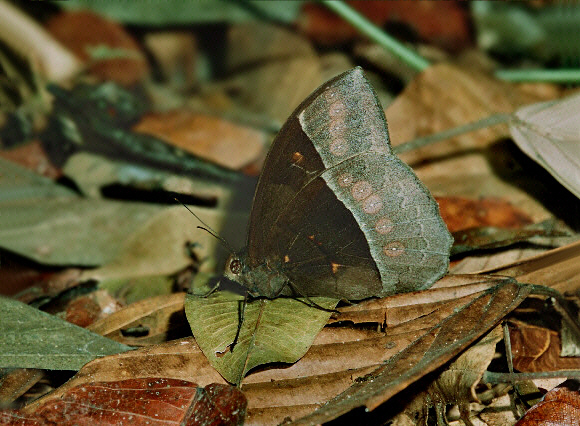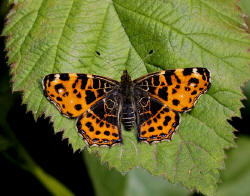In temperate regions of the world the spring and summer generations nearly always differ slightly in appearance. The Comma Polygonia c-album e.g. produces a more brightly coloured form called hutchinsoni in early summer, but the progeny of this brood have darker, duller undersides and a more ragged wing shape.
This generation hibernates as adults and the winter colouration provides them with a more effective camouflage when they are hiding amongst dead brown leaves at the base of bushes and trees.
A more extreme example is Araschnia levana. Butterflies emerging in spring are orange with black spots, and resemble small Fritillaries. Summer brood butterflies however are black with prominent white bands and resemble miniature White Admirals. The formation of different wing patterns in the spring and summer broods is known to be triggered by temperature and length of day during the pupal stage. It is thought that such seasonal differences in appearance somehow give the species an advantage over predators.
In the case of certain tropical species such as Taygetis mermeria from the Amazon the advantages gained from having rainy season and dry season forms are more obvious. The butterflies spend long periods at rest, settled among leaf litter on the forest floor.
In the dry season the leaves are desiccated and orange-brown in colour, so the butterfly has evolved an orange-brown form which simulates the appearance of dead leaves, making it more difficult for predatory birds and lizards to find it. The wet season form is darker with olive-brown wings that are a more effective camouflage in the tropical summer when the foliage is greener and denser, and the shadows darker.

Taygetis mermeria, dry season form, Rio Madre de Dios, Peru – Adrian Hoskins
 Taygetis mermeria, wet season form, Rio Madre de Dios, Peru – Adrian Hoskins
Taygetis mermeria, wet season form, Rio Madre de Dios, Peru – Adrian Hoskins


